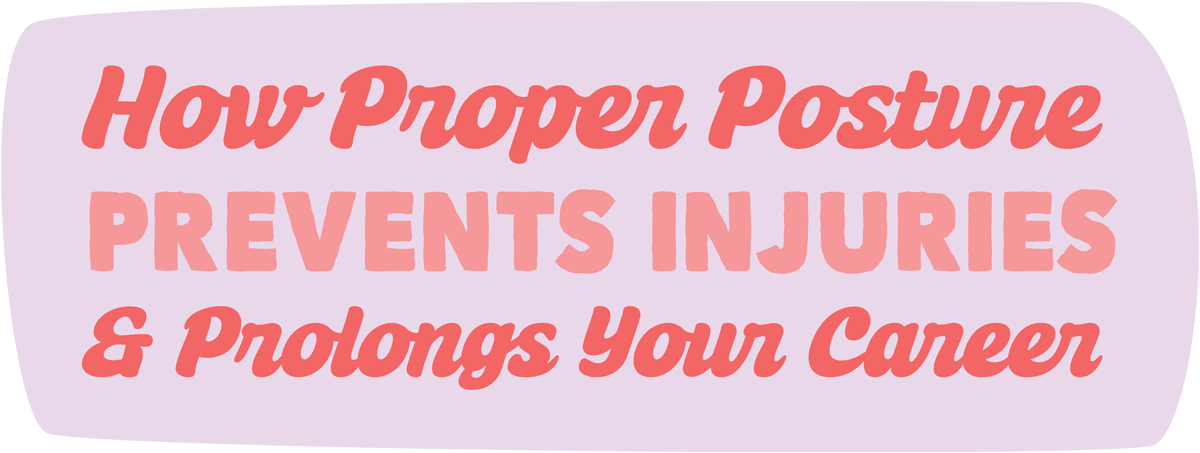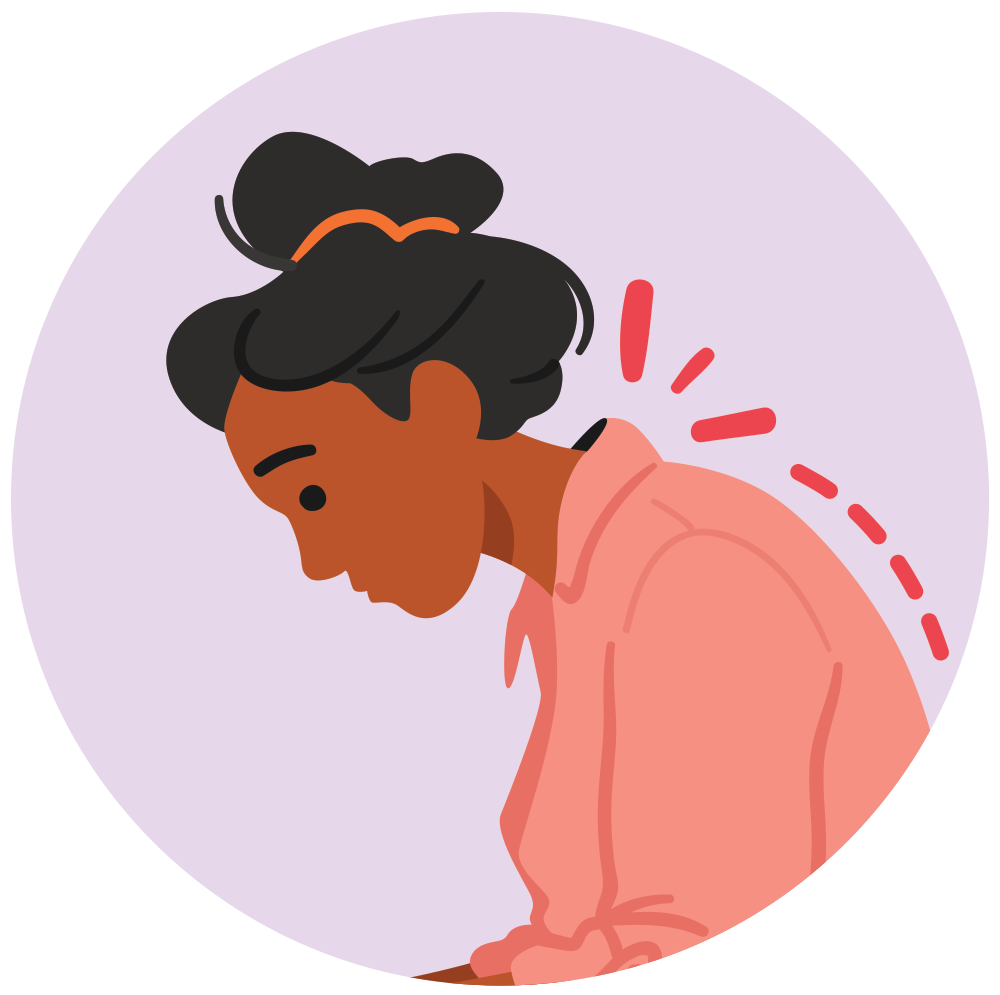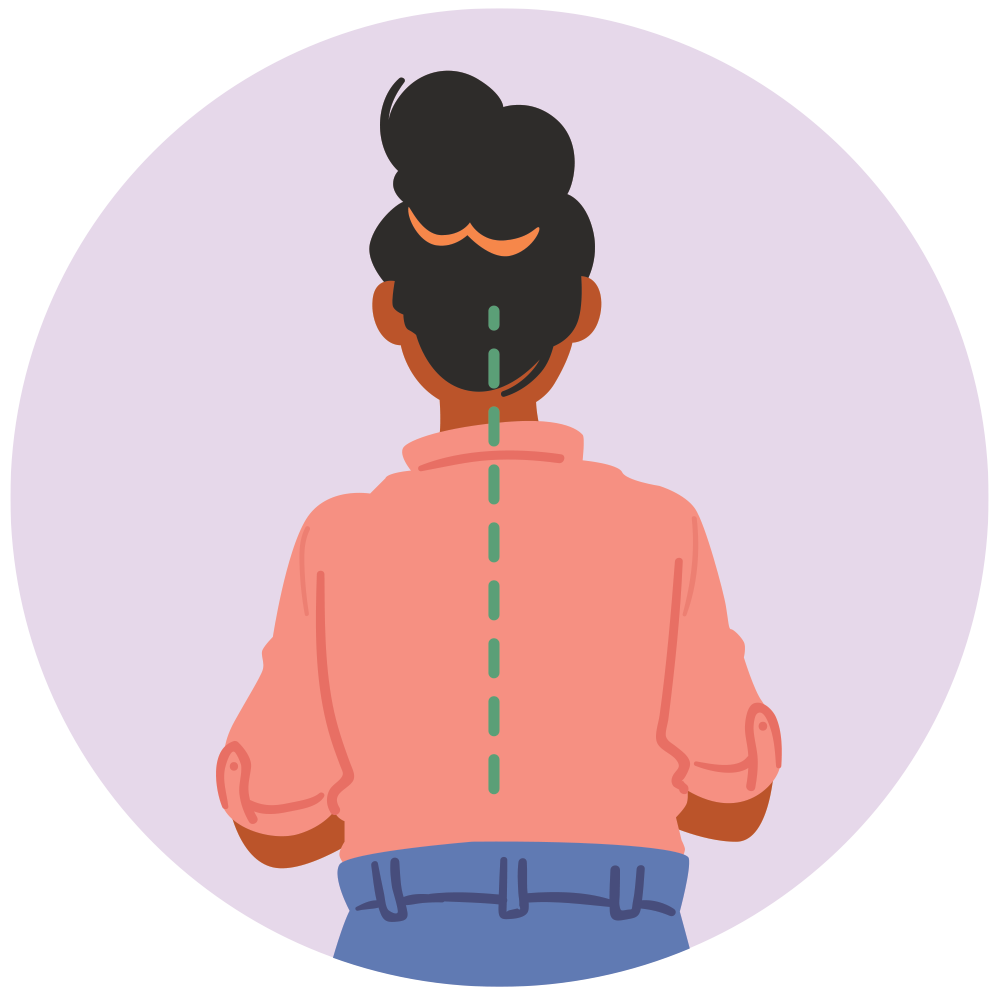




By Catherine Sitek
eterinary professionals face daily physical demands, from lifting and restraining patients to crouching, kneeling and static standing. These activities strain the body, leading to musculoskeletal pain, spinal injuries and cognitive fatigue. When improper posture takes hold, the consequences extend beyond physical discomfort, resulting in long-term damage to the body and hindrance to professional performance. Proper standing posture plays a crucial role in reducing these risks. Without it, veterinary professionals jeopardize their health and wellbeing.

The neck and shoulders also suffer under poor posture. Prolonged neck strain from forward head posture (FHP) causes inflammation and tension, which, in turn, lead to cognitive issues such as brain fog, decreased mental clarity and difficulty concentrating. These cognitive impairments hinder decision-making and productivity, which are key to the effective functioning of veterinary professionals.
Furthermore, without proper blood flow, the brain receives less oxygen, leading to cognitive fatigue, reduced alertness and difficulty concentrating. When the head is forward-tilted, muscle tension in the neck and shoulders further restricts blood flow to the brain, compounding the issue and causing inflammation. Therefore, maintaining proper posture engages the calf muscles, supporting overall wellbeing and optimal performance in any profession where standing is required.

This imbalance not only places excess strain on the upper body, but also compromises spinal stability, making it more susceptible to misalignment. Misalignment increases pressure on the intervertebral discs, which act as cushions between the vertebrae. Prolonged misalignment leads to various spinal disc injuries, further exacerbating pain and instability.
By maintaining proper posture and engaging the core muscles, veterinary professionals prevent overloading the upper body and ensure the spine remains aligned. A neutral spine not only prevents injury, but also supports the long-term health of the spinal discs and joints, helping to maintain overall wellbeing.
The foundation of good posture and recovery for veterinary professionals begins with ergonomics. Proper alignment reduces muscle strain and allows the body to move freely, especially during long hours on your feet. For newer veterinary professionals who may not yet experience musculoskeletal problems, focusing on proper posture now prevents future strain and maintains long-term health.
Recovery from musculoskeletal injuries is also an essential part of maintaining overall health. Once sway is controlled and posture is optimized, light recovery movements are crucial for relieving tightness and improving flexibility. Gentle stretches focusing on the shoulders, hips, and lower back release tension and enhance range of motion.
Strengthening the core is critical for recovering from past injuries and building long-term resilience. Core exercises, like planks and leg raises, target the muscles needed to stabilize the spine and improve posture. A strong core reduces the load on other muscle groups, preventing overuse and fatigue. Consistent core strengthening maintains posture and spinal health.
Additionally, practicing proper lifting techniques is vital for reducing strain when lifting animals or equipment. Bending at the hips, using the legs to lift, and engaging the core all protect the spine and minimize the risk of injury.
Incorporating recovery practices and regular stretching into daily routines helps maintain flexibility, reduces the risk of injury and sustains a healthy, active body. This holistic approach supports both immediate health needs and long-term productivity, ensuring a strong foundation for the demanding nature of veterinary work.
When veterinary professionals prioritize their health through posture, they experience fewer injuries, improved mental clarity and a longer, more productive career in veterinary medicine.
